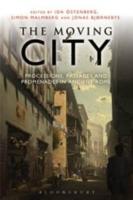
Bloomsbury Academic (2015) h/b 361pp £80 (ISBN 9781472528001)
In 260 BC the successful general Gaius Duilius was granted torch bearers and flute players to accompany him home every night, to celebrate his military achievements in a perpetual nocturnal celebration. Gaius Duilius therefore became a man you could not easily pass in the street. From the unmissable Duilius to the Christian virgins of late antiquity, this eclectic collection of papers investigates the sights and sounds of Rome, looking at the ways in which movement through a city full of symbolism and tradition could be used to convey messages about status, morality and power, with several variations on the theme, including group movement, ritual movement and violent movement.
Articles are grouped into four sections, ‘Elite Movement’, ‘Literary Movement’, ‘Processional Movement’ and ‘Movement and Urban Form’, with an extensive bibliography, a rather cursory index and wide chronological spread, from Republican Rome to Christian Rome, without any consistency of approach. The contributors come from a range of disciplines and backgrounds, ranging from well-known names in the field of Roman movement and gesture (Anthony Corbeill, Timothy M. O’Sullivan) and Roman attitudes to the built environment (Diana Spencer) to archaeologists, authorities in the study of religions and a ‘historian of mentalities’ (Gitte Lønstrup Dal Santo). Also included are contributions from PhD students involved in the workshops, which were hosted by the Swedish and Norwegian Institutes in Rome.
Monica Hellström looks at types of movement, through the characterisation of the ‘supervillain’ in the Severan histories, claiming that ‘speed, or indeed moving much at all, is without exception bad: if an elite individual is moving fast through the city of Rome, he (always a male) is up to no good’ (p.48). Hellström makes some intriguing links between the characterisation of dangerously energetic villains and the controlled power which formed the Republican ideal, although her discussion of precedents is rather thin on Tacitus’ narrative techniques.
Other essays look in detail at the movement of individuals and their implications. Livia, wife of Augustus, is the subject of an essay by Lovisa Brännstedt; in being granted the unprecedented right to travel through Rome in a two-wheeled carpentum like the Vestal Virgins, Livia may well have presented a striking and controversial spectacle. Michael Mulryan looks at the churches of the martyr-deacon St. Lawrence which were positioned throughout Rome, marking significant events in the martyr’s story on a kind of religious tourist trail.
Arguably the most successful essays in this volume deal with the ‘written Rome’, focusing on specific texts rather than the uncertainties of poorly recorded group movements. Timothy M. O’Sullivan investigates what Augustan ‘urban tour’ poems suggest about the restriction of movement through Rome in the early decades of the empire, while Anthony Corbeill looks at the practice of self-help and public justice in the Roman streets, through Horace and the ‘pest’ of Satire 1.9.
This is a volume aimed at the academic market, and in its fashionable focus on society’s experience of space it is a product of its time. It is an enjoyable read, successfully presenting a picture ‘of a bustling, lively society, where cityscape and movements are closely interactive and entwined’.
Cora Beth Knowles
